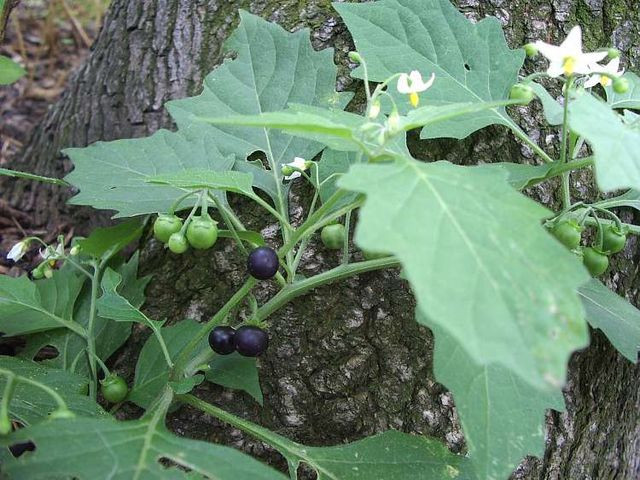pōpolo
kikino | noun / pō.polo /1. n., The black nightshade (Solanum nigrum 🌐, often incorrectly called S. nodiflorum) a smooth cosmopolitan herb, .3 to .9 m high. It is with ovate leaves, small white flowers, and small black edible berries. In Hawaiʻi, young shoots and leaves are eaten as greens, and the plant is valued for medicine, formerly for ceremonies.
- References:
- Neal 744.
- See pōpolohua.
- PPN polo, PEP poopolo.
2. n., An endemic lobelia (Cyanea solanacea), a shrub to 2.5 m high; in young plants the leaves are large, sinuate, thorny on both sides; in mature plants the leaves are unarmed; flowers 5 cm long light-colored; fruit a large orange berry.
3. n., The native pokeberry.
- References:
- See pōpolo kū mai.
4. n., Same as maiko, a fish.
- Source:
- Niʻihau.
Papa helu loli | Wehewehe Wikiwiki update log
 n., The black nightshade (
n., The black nightshade (